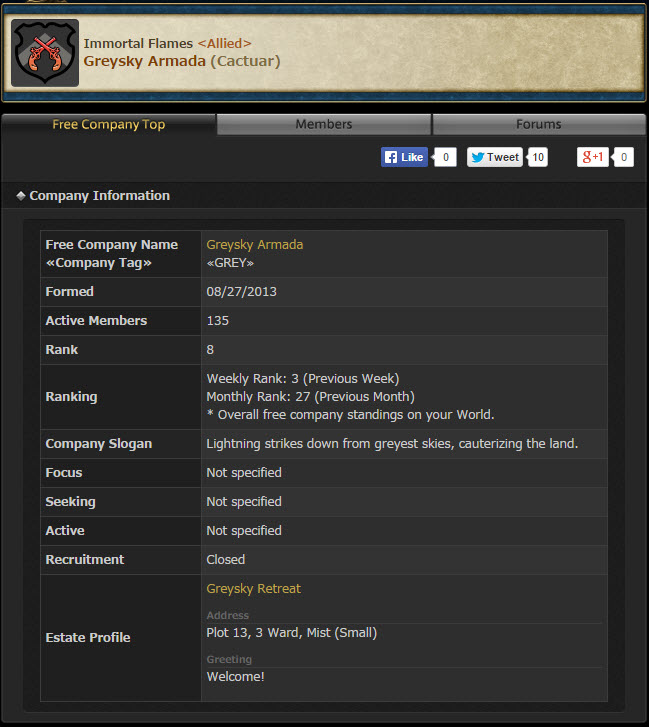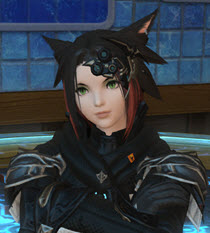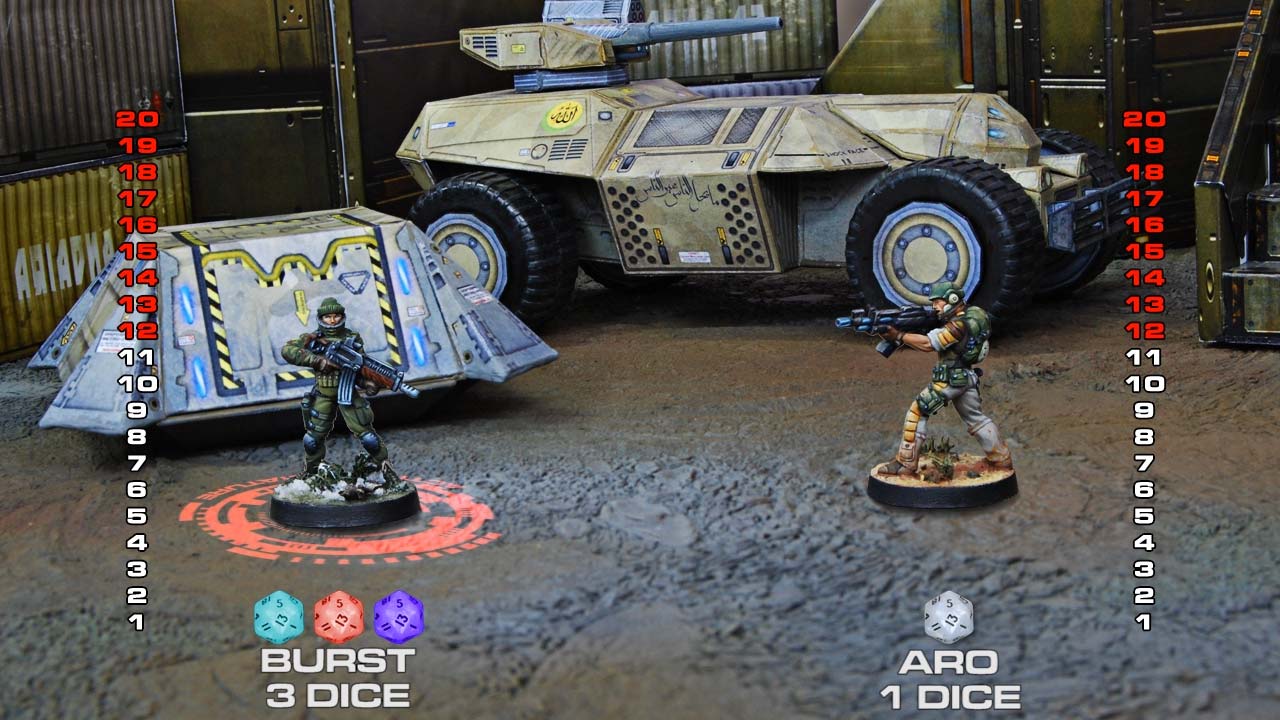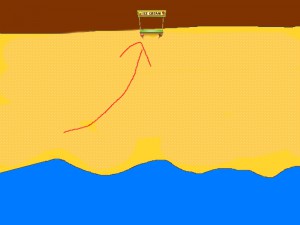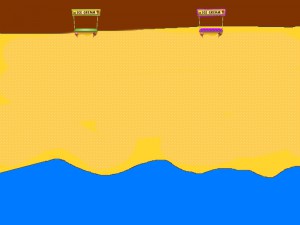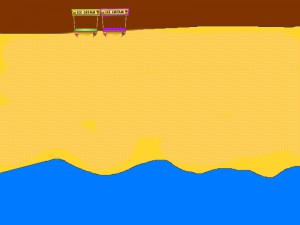**I wrote this a bit back on the Infinity forums, and some people found it useful, so I figured I’d preserve it here. If you don’t play Infinity, the listbuilding software is here and the rules are here, if you’re interested!**

Tam’s Tactica: ITS Listbuilding
I’m not the highest ranked player out there, but I do play every faction but one (sorry, CA players, but I’ve been reading through the CA army list for the purposes of this writeup) and have brought all of them except Ariadna to multiple tournaments at various times.
I view listbuilding as two broad categories: ITS listbuilding and non-ITS listbuilding. I make this separation because there’s a vastly different approach to successful listbuilding that occurs in an ITS scenario setting than in other types of formats, mainly centering around specialists. ITS also uses a two-list format, which can significantly affect listbuilding, which I want to address here.
Without further ado:
Listbuilding for ITS
I start every list I make with a basic checklist. If a list I create doesn’t check all the boxes, it’s doesn’t make the cut. Here’s the checklist:
1.) Do I have enough orders? Orders are gold, and vitally important, I want at least 10 in every 300pt list.
2.) Do I have enough specialists? Specialists win games, and a really strong ITS strategy is assassinating enemy specialists so that they can’t score points even if they table you. I want enough that if the opponent scalpels out a couple, I’m not out of luck. Generally, I like about 40% of the models in my list to be specialists. I’ll get to why that is later.
2a.) Do I have the RIGHT specialists? There are a lot of secret objectives, and relying on the HVT isn’t a good plan, because if your opponent can tell immediately that that’s your only good option for scoring secret objectives, they can make it difficult for you to accomplish that. Having a spread of possible options here is important.
3.) Do I have fewer points remaining than the cheapest model in my chosen army/sectorial? This is a question that comes down to efficiency. If I can still take the cheapest model possible, I should, even if that’s a lone irregular troop in its own combat group. If I can’t, but still have those points remaining, I’ve probably spent points inefficiently somewhere else and should reevaluate.
4.) Do I have answers to basic questions my opponent’s list might have? “Questions” are things like “how do I handle camo?”, “how do I handle an emplaced Total Reaction HMG?”, “how do I handle a TAG”, etc. Not every one of these need to be answered in a single list, because you get two in ITS, but it’s something to think about.
5.) Does this list have a plan for when it’s winning AND losing? A super-rambo list with a killer TAG and a super HI hacker and a bunch of mostly-useless cheerleaders will look amazing when it’s winning, but if you lose that TAG and HI in an unlucky firefight, the rest of your list looks sad. Similarly, a brick-breaking linkteam is awesome until the link leader gets Isolated and the link breaks, at which point you have to figure out what to do. A good way to tell is to choose two models at random to remove from the list and see if it can still score points. If the answer is “yes, but only if it’s not one or both of these models”, you’ve put too many eggs in one basket.
6.) Is it a legal list? This really goes without saying, but it’s got to have a Lt, has to be within SWC limits, etc.
These are the basic seven things I check for when looking to see if a list can succeed.
Success in ITS, for most scenarios, has very little to do with shooting your opponent. It is possible, albeit unlikely, to score full points in every mission except Annihilation without ever shooting anyone. This is a really important thing to keep in mind when building ITS missions. I’ve played games where I’ve literally been in retreat with a single surviving model, having not even wounded a single one of my opponent’s force, and won 10-2. In ITS, there are models that can shoot people really well, and there are models that win you the game, and they’re rarely the same.
I divide up the sections of my list very broadly, into four categories: Specialists, Offense, Tricks, and Support. I’ll go into each of them below.
First, Specialists.

Specialists are the most important part of your list. A lot of people will throw them in as an afterthought, adding them once they have their “core”. For me, specialists ARE the core; they’re what is winning you the game. If it were just you on the table for a scenario, 100% of your orders would be spent on specialists and you’d score all of the points. The only reason to spend orders on non-specialists is to remove obstacles in the specialists’ way without risking them. Specialists are the core, supported by everything else you’re bringing.
As mentioned above, I like about 40% of the models in my list to be specialists. This isn’t to say I want 40% of the points of my list to be spent on specialists, just that for every 10 models, I want 4 specialists, more or less. If I can get more, great, but I don’t push it. 3 is, for me, a bare minimum, and I’ve made lists that have 8 or 9 out of 10 models as specialists. The reason for this is threat saturation. That single rambo list I mentioned above? It paints a huge target on the rambo. Instead, if I have four slightly less deadly models, it forces my opponent to either ignore those threats or diffuse any offense across all four, increasing their chances of success. The more specialists you have, the more opportunities you have to win even through losses.
I also like efficiency in my specialists. I don’t want to have to run a single 4-2 model all over the table to score points. Like many, I favor infiltrating camo specialists, but not exclusively. A few things that get my attention when I’m looking at a specialist model:
–Does it infiltrate? This gets me up the board fast, scoring points with a minimum of orders spent.
–Is it well protected? Camo and HI specialists win big here, I want my specialists to live. Smoke is great if I can get it, because it means I can press buttons on consoles in peace.
–Is it fast? 4-4 is a minimum, unless it infiltrates. 6-4 is better. 8-6 is amazing.
–Is it efficient? I want to be getting a specialist that can do what I need it to without breaking the bank in terms of points, SWC, etc.
–Can it do other things? Hackers and Doctors win big here. Others provide link bonuses. Some lay mines, have Sensor, occasionally have a heavy weapon, and so on.
Many of the best specialists fulfill several of the above– an infiltrating camo hacker offers a lot of tools in a single package, and enables useful REMs. Sensor Remotes are fast, can reveal camo, and can score CPs. AD Hackers can sit safely off the table and drop right where I need them. The perfect specialist would be a TO Camo Infiltrating 2W HI on a motorcycle with an anti-materiel weapon, zero-V smoke, Minelayer, and D-Charges (and would obviously cost 100+ points and never happen). Knowing what makes a specialist good at their job, though, allows you to better pick from the specialists you have available.
In general, my priority when looking at specialists is Hacker/FO, Doctor, Chain of Command, Engineer, Specialist Troop, Paramedic. Hackers are versatile, FO is cheap and adds Flash Pulse, Doctors give me longevity, Chain of Command is highly valuable, Engineer is useful but specific, Specialist Troop is extremely cheap and no-frills but rare, and Paramedic generally feels overpriced compared to FO.
Once you have the Specialists, it’s time to think about the Support.
Support is what lets your specialists do their work. Often, this means they provide orders. Other times, they add smoke, help protect your specialists, or otherwise do their (often passive) part in securing your victory.
My approach to building a list for an unfamiliar faction (let’s do CA, since I never have!) is to look through the army list for the best specialists I can find (for CA, I like the Med-Tech Obsidon Medchanoid, the Charontid Hacker, the Malignos Observer or Hacker, and the Shrouded Observer or Hacker), then fill the rest of my 10 orders out with the cheapest units I can find, forming the very basic core of my list.
In the CA example, my list thus far looks like this:
Shrouded FO
Shrouded FO
Malignos Hacker
Charontid Hacker
Med-Tech
Imetron
Imetron
Ikadron Batroid
Ikadron Batroid
Unidron Batroid / Morat Vanguard Infantry / Daturazi
227|1
It’s not a great list, but it’s 10 orders and it could win games. I need to make it a legal list, and I’ve got 73 points and 5 SWC for other things, including making my list legal.
I like to have my list be at about 150 points or so once I’ve done this, if I can manage it. The Charontid in the above is pretty expensive, and I took two Shrouded FOs, so I’m a lot higher than I’d generally like. We may need to drop some stuff. The Charontid Hacker, however, can be my Lieutenant, which makes it really attractive. I still only have 8 models that can do anything, and no one has a weapon with long range. Now comes the fun part:
Offense
This is where things get fun. I want to replace models in the list I’ve made, one by one, to put some stopping power in my list and support my specialists. What works well here will change dramatically based on your choice of specialists and your particular favored flavor of combat. I like to have heavier weapons to cover every range, and to provide board control.
One of my go-tos is the humble Total Reaction HMG remote. It’s not fancy, but it will severely punish unwary opponents and requires that they put some effort into removing it.
I also really like Minelayers. It’s a cheap way to make sure my opponent can’t get too tricky early on, and forces them to deal with a potentially deadly obstacle. Since a lot of the infiltrating Camo specialists I like will frequently force me to pick between Minelayer and Specialist options, I’ll often bring one of each, sometimes downgrading a specialist in one place (Shrouded FO becomes Minelayer) and upgrading something else (Unidron Batroid becomes FO).
Backing things up with an HI with a decent gun is a good way to finalize things, or if I have a particularly aggressive force, a TO sniper or something that can take out a TAG (Noctifer with Spitfire or Missile Launcher does the trick here, or a Suryat or Sogarat with HMG).
Once I have a solid grasp of how I will remove problem targets, I want to hit the last point:
Tricks

Tricks are how I give my opponents fits. It’s the Smart Missile Launcher in an otherwise innocuous Nomad list, that suddenly makes all of those hackers and repeaters a serious problem. It’s the smoke-dropping Myrmidon that turns a Sophotect from a backline healer to a fast, highly effective objective stealer. It’s the question you ask if an opponent can handle and punish them severely if they can’t. Not every faction or list has these, but they’re nice if you can fit them in.
In this case, we’re going to go with a really simple question: Can you deal with an Impersonator? Here’s the list, after substitutions:
Shrouded Minelayer
Shrouded FO
Malignos Hacker
Charontid Hacker Lt
Med-Tech
Imetron (AI Beacon)
Unidron Batroid FO
Q-Drone (TR HMG)
Noctifer Missile Launcher
Speculo Killer
298|5
It’s a pretty solid list, overall, with 5 specialists covering four different types, some TAG-removal power, some board control, a very nasty Impersonator to tie up my opponent, and a lot of camo. It’s got a glaring weakness to enemy camo, since there are no visors in the list, and I’d really like the Med-Tech to have a helper. Even so, I’d probably run this list as-is.
This is the stage of listbuilding where I start tweaking. I only need one point to give the Med-Tech a helper, and I can easily get that point by dropping FO from either the Shrouded or the Unidron. This will bring me down to 4 specialists but will give my doctor/engineer a lot of flexibility. I’ll drop it from the Unidron, because it’s less likely to be in a good position, and get myself a helper for the doctor/engineer. I may find myself with enough points to nab another Imetron for orders, or an entire new unit, pushing me to 11 orders. In that case, I’d put the Q-Drone in Group 2, as the only model, allowing me to use its one order to reposition as needed but otherwise sitting and taking AROs, as it should, while not draining my primary order pool if it gets destroyed.
The lack of visors is kind of concerning, and if it really worries me I can replace the Noctifer with something that has a visor, either a Spitfire Yaogat or finding somewhere to free up a point for a Maakrep HMG. It’s not necessarily a huge concern, though, because I still have the second list.
The Second List

So, I’ve got one list, but this is ITS, which allows me to bring two. This is a thing I should always do.
I’m going to build the second list in the same kind of way as the first, but I want to focus on shoring up the weaknesses of the first list, and not being overly redundant with its strengths. This is also where I want to start looking at the scenarios and determining which my first list is good at and which it isn’t.
Looking at the first list:
Weaknesses
-No MSV, weak against camo
-Very little weight of fire
-Reliance on infiltrating camo specialists
Strengths
-Very strong specialists
-Well-rounded
For my second list, I want to start with those weaknesses. First, lack of visors. I really want a visor or two in the list, but there are relatively few options for me. I can take a Maakrep Tracker, a Yaogat, certain Charontid options, and Ko Dali. I also want greater weight of fire– more shots. That makes the Maakrep HMG and the Charontid HMG look pretty nice, as well as Ko Dali. Ko Dali also has D-Charges, which I can use to accomplish objectives. Charontid HMG Lt and Ko Dali it is.
I still need specialists in this list, and I want to be prepared in case my approach of infiltrating camo doesn’t work. I also want a hacker in here, for access to cheap troops. The Shrouded are still very nice and very useful, and the Zerat offers a nice cheap infiltrating hacker option, also allowing me to get more cheap troops. One Shrouded FO, one Zerat hacker.
Now I fill out my order pool. Four Unidron Batroid FOs, two Daturazi. The Daturazi offer me some fun smoke tricks with the nice visors I’ve got, and also let me put smoke on objectives to claim them more easily. Impetuous also gives me some more orders to work with on my turn.
I’ve now got a list that’s got a lot of okay specialists, a powerful core, and about 50 points left. I could start upgrading the Batroids to more powerful things, but that’s going to make it fairly similar to my original list, with some things swapped around. I want to ask my opponent some different questions.
Enter cheap warbands. My previous list was a very tight 10 orders of mostly-high-quality troops. This list is already a bunch of cheap troops supporting a couple of powerhouses. I’m going to skew the list even further and start a second combat group, containing an Oznat, two Pretas, a Gaki, and a pair of Imetrons for orders. This group is entirely expendable, and exists to put more smoke on the board and flood my opponent with dangers. Final list:
Group 1:
Ko Dali
Charontid HMG Lt
Zerat Hacker
Shrouded FO
Unidron Batroid FO
Unidron Batroid FO
Unidron Batroid FO
Unidron Batroid FO
Daturazi Chain Rifle
Daturazi Chain Rifle
Group 2:
Oznat
Preta
Preta
Gaki
Imetron
Imetron
300|2.5
I don’t use all of my SWC, but I don’t feel like I need to, because that’s not what the list is going for. This list is better for quadrant-control and kill-em-all style missions, just due to the abundance of cheap yet dangerous troops. It also still has 6 specialists (37.5% of troops) and another model that may be able to accomplish some secret objectives quite handily.
These same listbuilding concepts can be applied to any faction– I developed them while building Nomad and Neoterra lists, and before today had never put together a Combined Army list, but I would play either of the above lists reasonably confidently.
As you play lists, I recommend playing them in pairs. Refine one, and then refine the other to suit. You may find that one list with visors and one without doesn’t work for you, and having a more even split of visors is important. You may find that you need more hackers, or more FO, or some other specific thing. You might find that you favor one list over the other so much that you never play the secondary list, at which point you should reevaluate it and potentially scrap it and start over.
I want to close with another listbuilding example, using a sectorial:
ISS Listbuilding Example (with linkteams)
ISS is really strange to build lists with. I don’t have a ton of specialist options, so I have to rely on other things.
I’m still using the same philosophy– I want solid specialists as my core. Instead, however, in ISS I have an interesting option: the Wu Ming FO. It’s already pretty cheap HI, and has 4-4 MOV, but I need it to do something other than “be HI”. Lucky for me, it’s linkable.
Linkteams let me take a specialist and embed them in a team that’s made for offense, combining the two into a single cohesive unit. I’ve found I don’t much care for linkteams in ITS that don’t include at least one specialist. For the purposes of this ITS list, since I’m putting together a Wu Ming linkteam (that’s already going to be expensive), that link is going to be my core:
Wu Ming FO
Wu Ming FO
Wu Ming Boarding Shotgun + Tinbot
Wu Ming HMG
Wu Ming Light Rocket Launcher
Bam, nice combination of weapons, two specialists, and some hacking defense, all trucking around the board. The FOs both help me win and also make the HMG and LRL much nastier.

I’ve got the list’s core, but I still need specialists– two is insufficient. The Wu Ming will have to cross the field, so ideally we’ll use something that doesn’t. Bam, Ninja Hacker, the surprising go-to specialist for Yu Jing sectorials.
I also need a lieutenant, and in this case I want something that can help me leverage that killer linkteam I have. Sun Tze makes the cut.
Whoops, I only have 24 points left. I can still fill out my order pool with a Celestial Guard (with KSCD) and a pair of Kuang Shi.
Final list:
Wu Ming FO
Wu Ming FO
Wu Ming Boarding Shotgun + Tinbot
Wu Ming HMG
Wu Ming Light Rocket Launcher
Sun Tze Lt
Ninja Hacker
Celestial Guard KSCD
Kuang Shi
Kuang Shi
It’s a bit light on specialists, and very focused on the Wu Ming link, but it’s a really nasty link, and it’s easy to overlook Sun Tze as a flanker, not to mention the Kuang Shi pushing forward. I’d need to play it and tweak it, but it’s a list that hits all my points and should work well. I’d play it.
I hope this was valuable for someone, and/or an interesting read.



